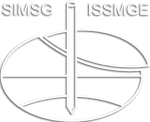Soils contaminated by heavy metals - study of the addition of carbon nanotubes and montmorillonite
Soils contaminated by heavy metals - study of the addition of carbon nanotubes and montmorillonite
The "health" of soils is increasingly a concern of modern societies, considering its importance in the fields of food, water, biodiversity and even for climate change control. Anthropogenic activities accentuate this problem by inducing soil contamination. This experimental work studies the effect of two additives (carbon nanotubes versus natural clay) on the immobilization of heavy metals (lead, copper, nickel and zinc) in a contaminated soil. Suspension adsorption tests were carried out in order to provide preliminary information on the adsorption capacity of the soil for the different heavy metals tested, while percolation tests were carried out in order to evaluate the immobilization of heavy metals by different additives under conditions similar to a real soil contamination situation. The results showed that soil particles were able to retain considerable amounts of heavy metals (especially lead and copper), which is linked to their fine particle size and the high organic matter content of the soil. Under conditions of good dispersion of the additives, the addition of carbon nanotubes or natural clay can increase the adsorption of heavy metals, except for Zinc, due to its low electronegativity and high mobility. The results allow the conclusion that the additives, carbon nanotubes and natural clay, have the potential to minimize the mobility of heavy metals in contaminated soils when tested under conditions similar to a real on-site situation, minimizing their mobility to groundwater. The obtained results can help designers and decision makers in choosing the best materials to remediate heavy metal contaminated soils.
Antonio Alberto S. Correia; M. Matos; A. Rita Gomes; M. Rasteiro
9th International Congress on Environmental Geotechnics (ICEG2023)
Characterisation, Remediation and Management of Contaminated Sites and Wastes
https://doi.org/10.53243/ICEG2023-429
